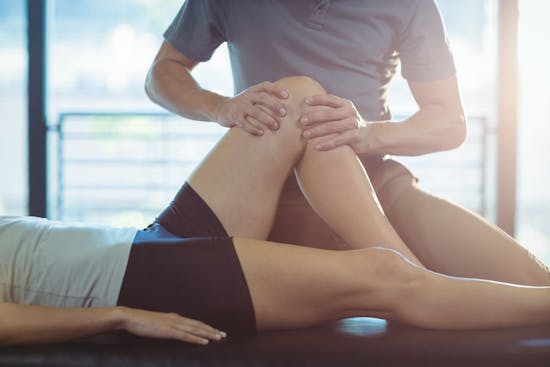
The knee is one of the largest and most complex joints in the body. It is a hinged synovial joint that is located where the tibia and femur meet. Because the knee is so complex and supports a great deal of body weight, it’s no wonder why knee pain is one of the most common complaints among patients of all ages.
Fortunately, most knee problems don’t require surgery and can be resolved effectively treated with physical therapy and other treatment methods (e.g., the use of anti-inflammatory medication, rest, ice/heat, home exercise programs, etc.). Our physical therapists (PTs) are experts in the art and science of evaluating and treating of knee dysfunctions. We care for people of all ages and treat a variety of muscle, joint and neurological conditions.
Conditions we have successfully treated:
- Arthritis
- Chondromalacia
- Patellofemoral Pain
- Ligament Sprains
- Tendonitis/Bursitis
- Tendon/Muscle Strains
- IT Band Syndrome
- Post Surgical Conditions
What are my treatment options?
- Drugs
- Corticosteroid Injections
- Epidural Injections
- Physical Therapy*
Advantages of Physical Therapy:
- No side effects.
- Cost-effective.
- Supported by clinical research*.
- Customized to treat the underlying cause.
Your Recovery Process:
- Pain Relief
- Recovery of Knee Motion
- Recovery of Strength
- Functional/Sports Retraining
- Independent Home/Health Club Program
Components of Your Care:
- A thorough biomechanical evaluation.
- Extensive patient education.
- A customized treatment plan.
- Gentle hands-on techniques to relax the muscles.
- Effective joint mobilization techniques to decrease stiffness.
- Pain relieving modalities such as ice, heat, ultrasound or electrical stimulation.
- Targeted stretching for tight muscles.
- Progressive strength training.
- Balance and muscular re-education.
How long will it be until I notice improvement in my knee pain?
Everyone is different. You may require one or two visits or an extended care plan over several weeks or months. If you’re ready for relief, and tired of “masking” your pain, treat the cause, not just the symptoms!
* Cited from the academic journal, Clinical Biomechanics, Aug. 2006.
